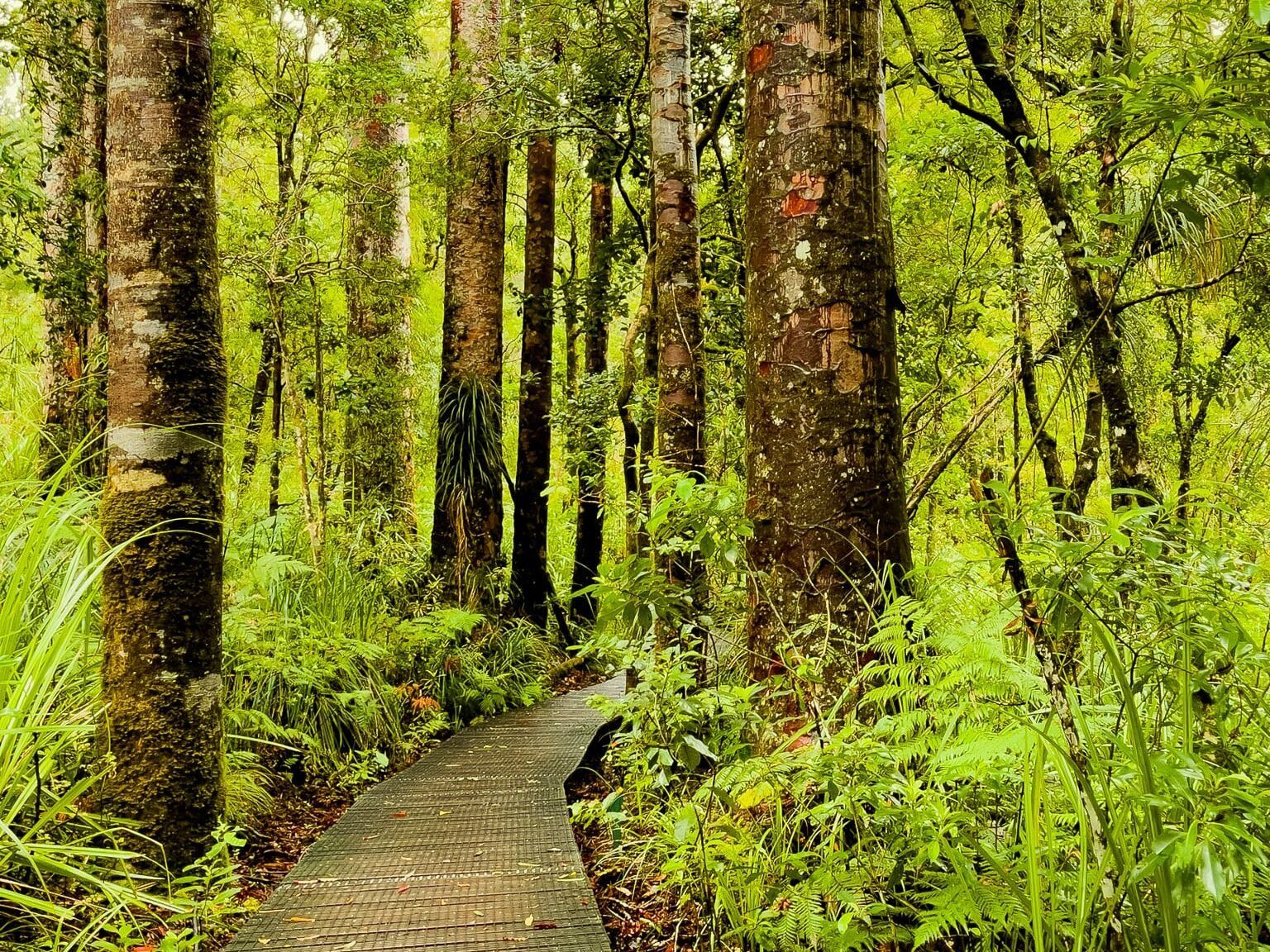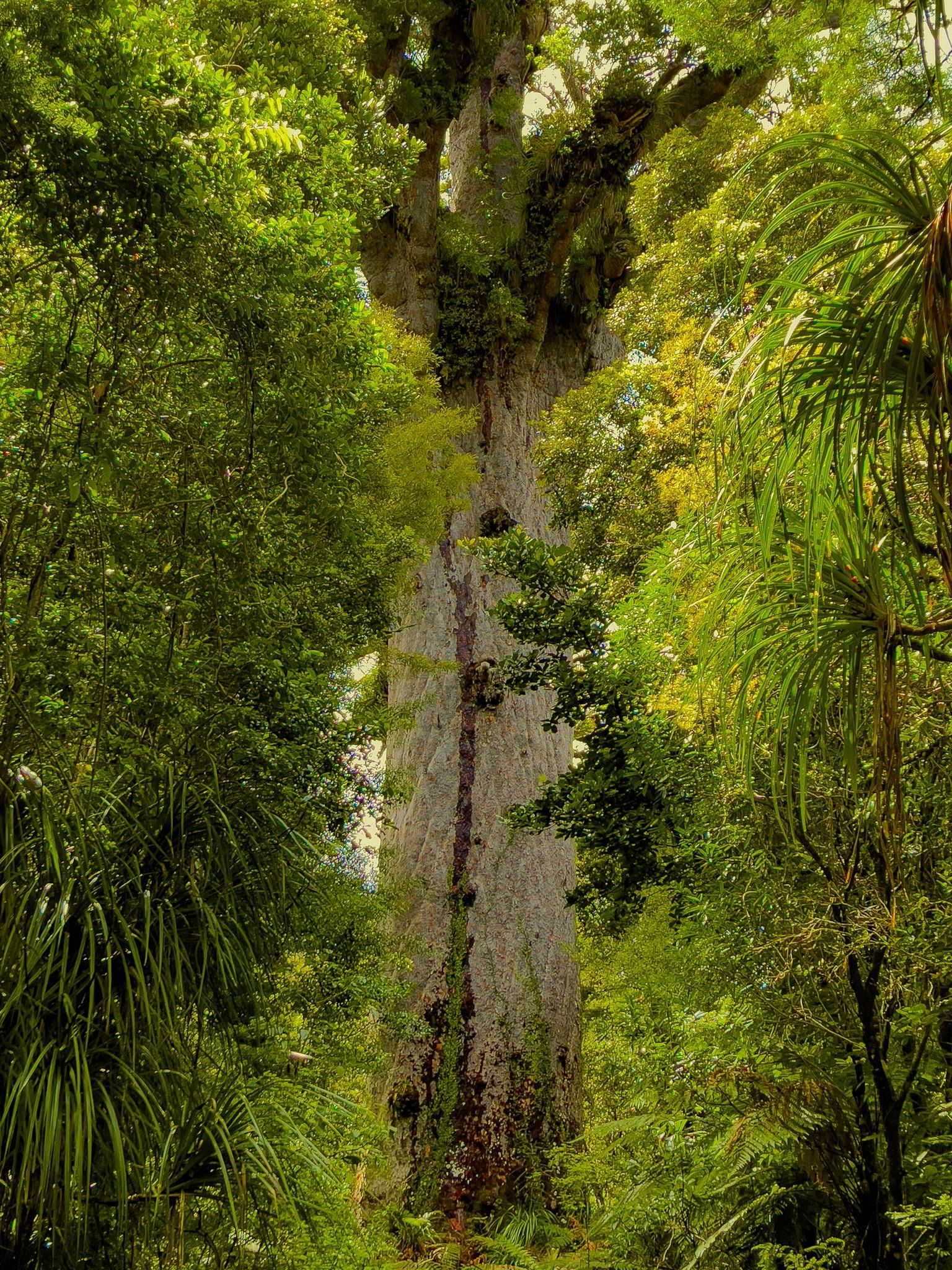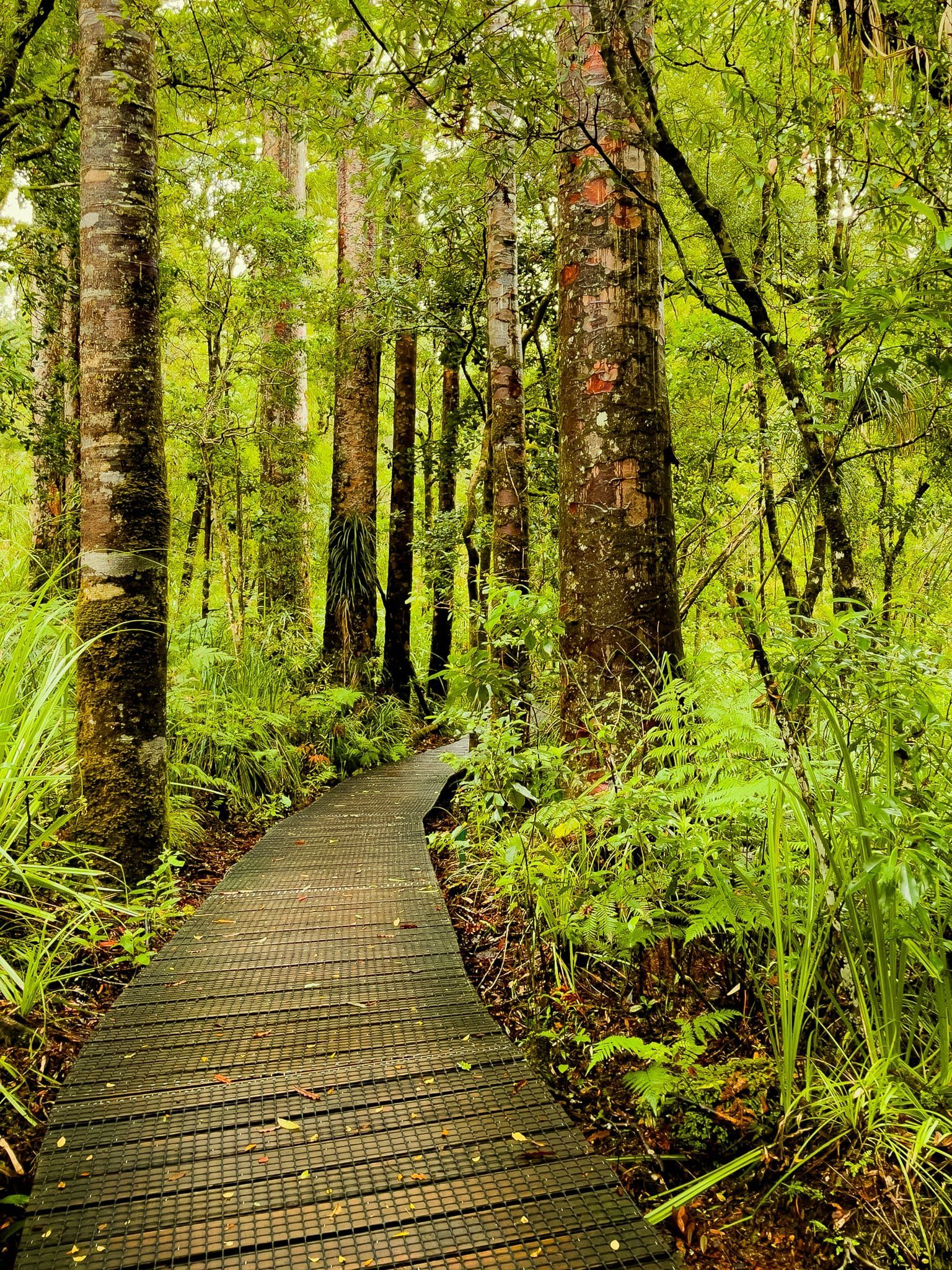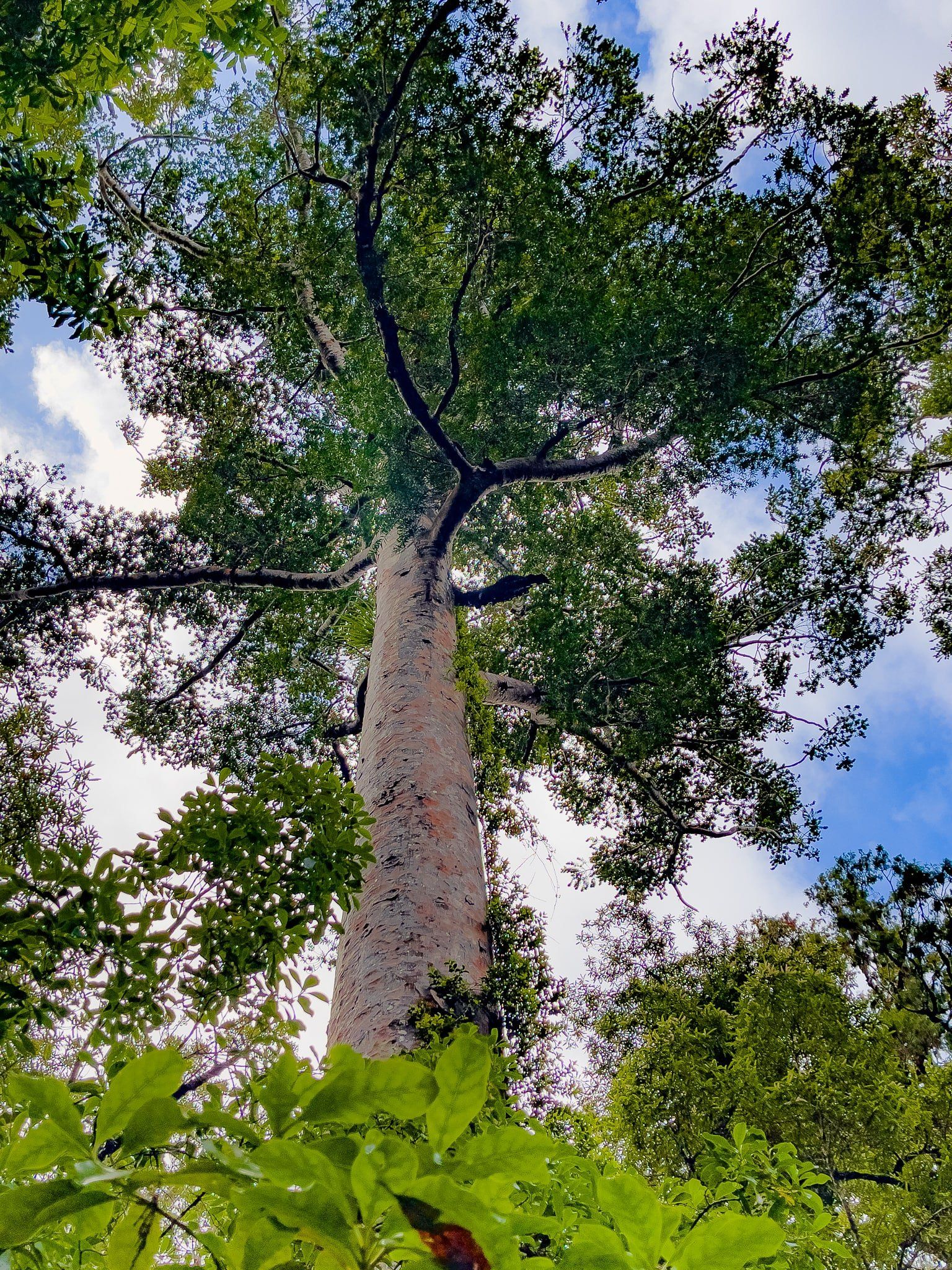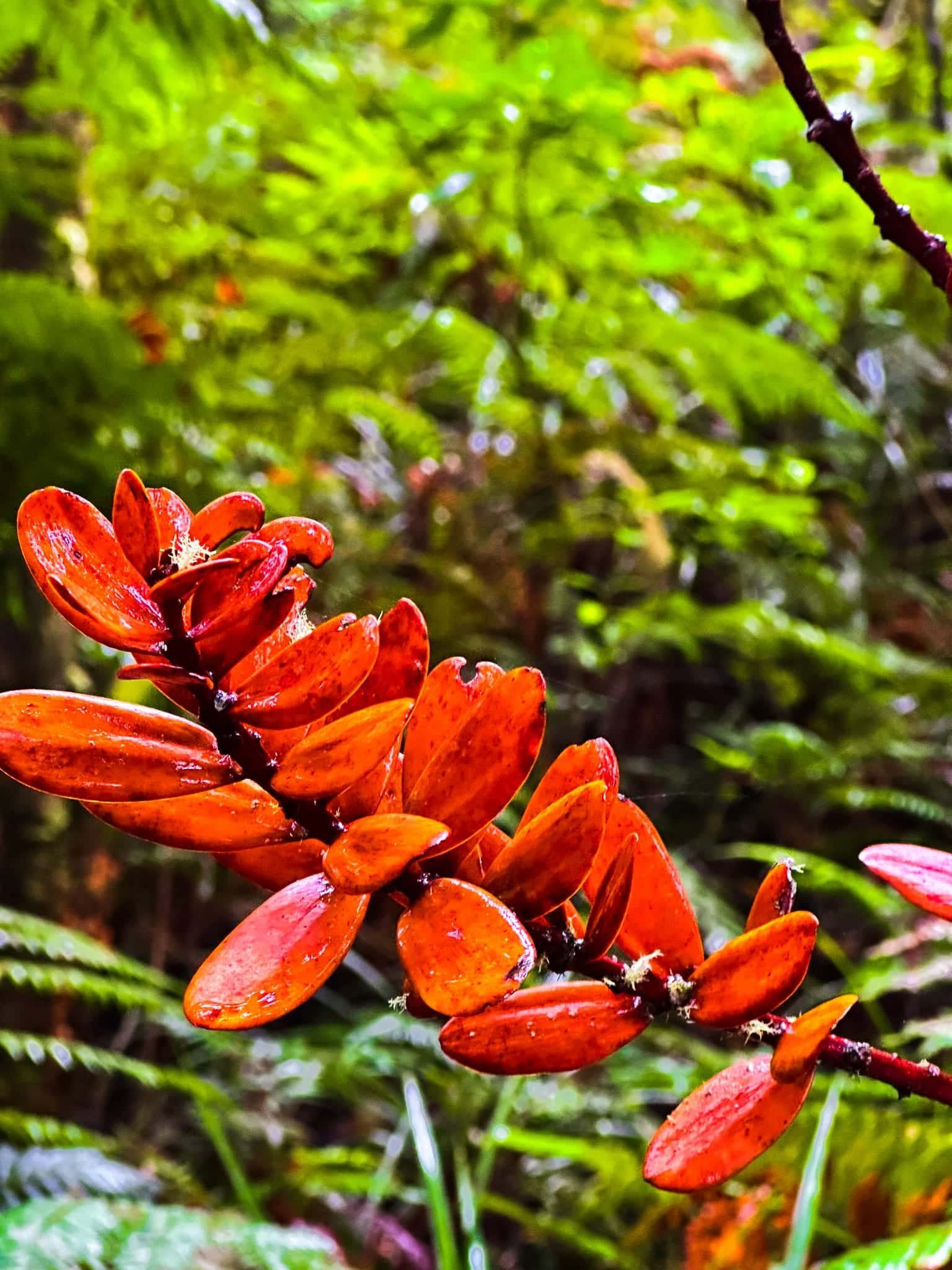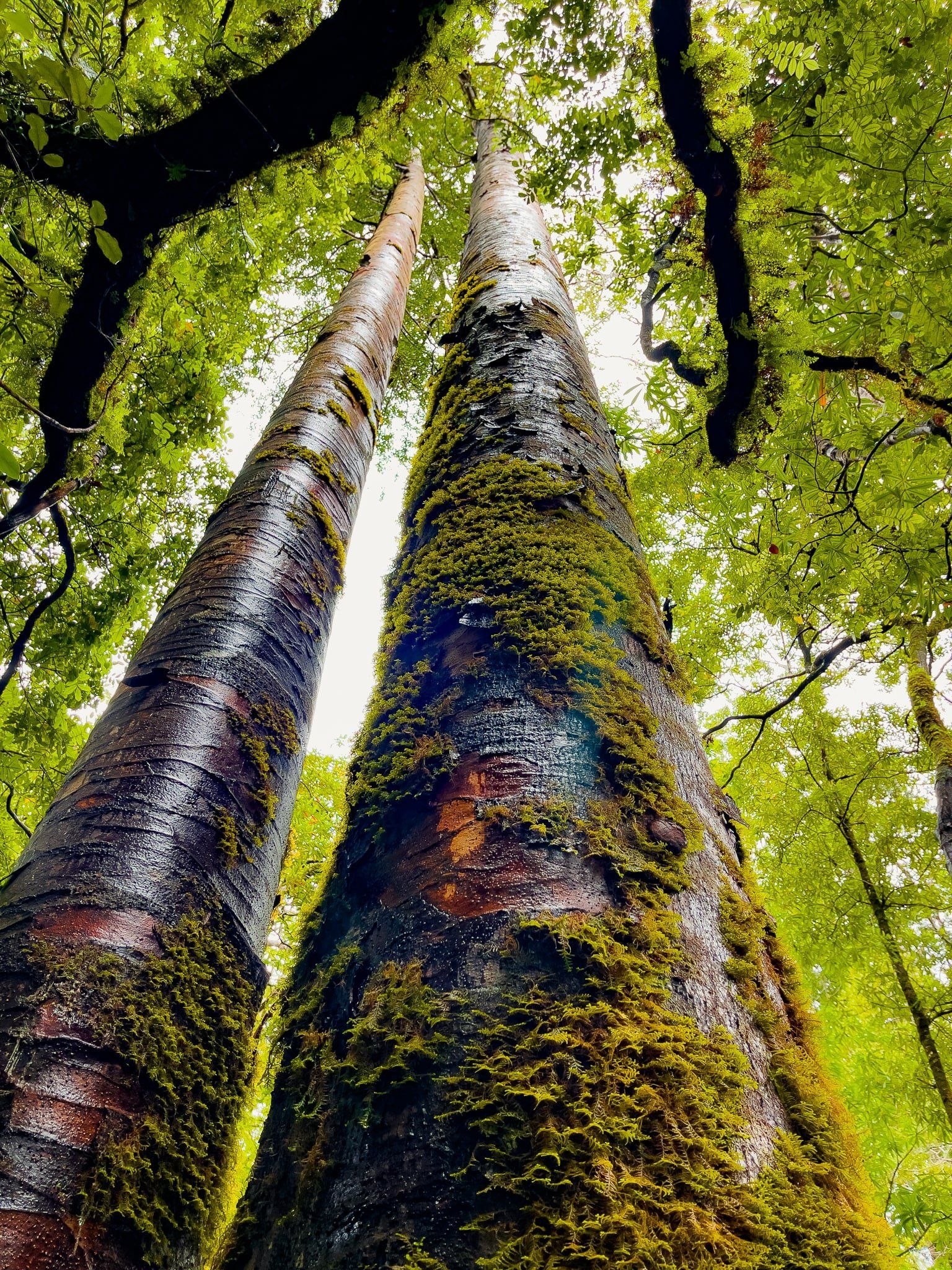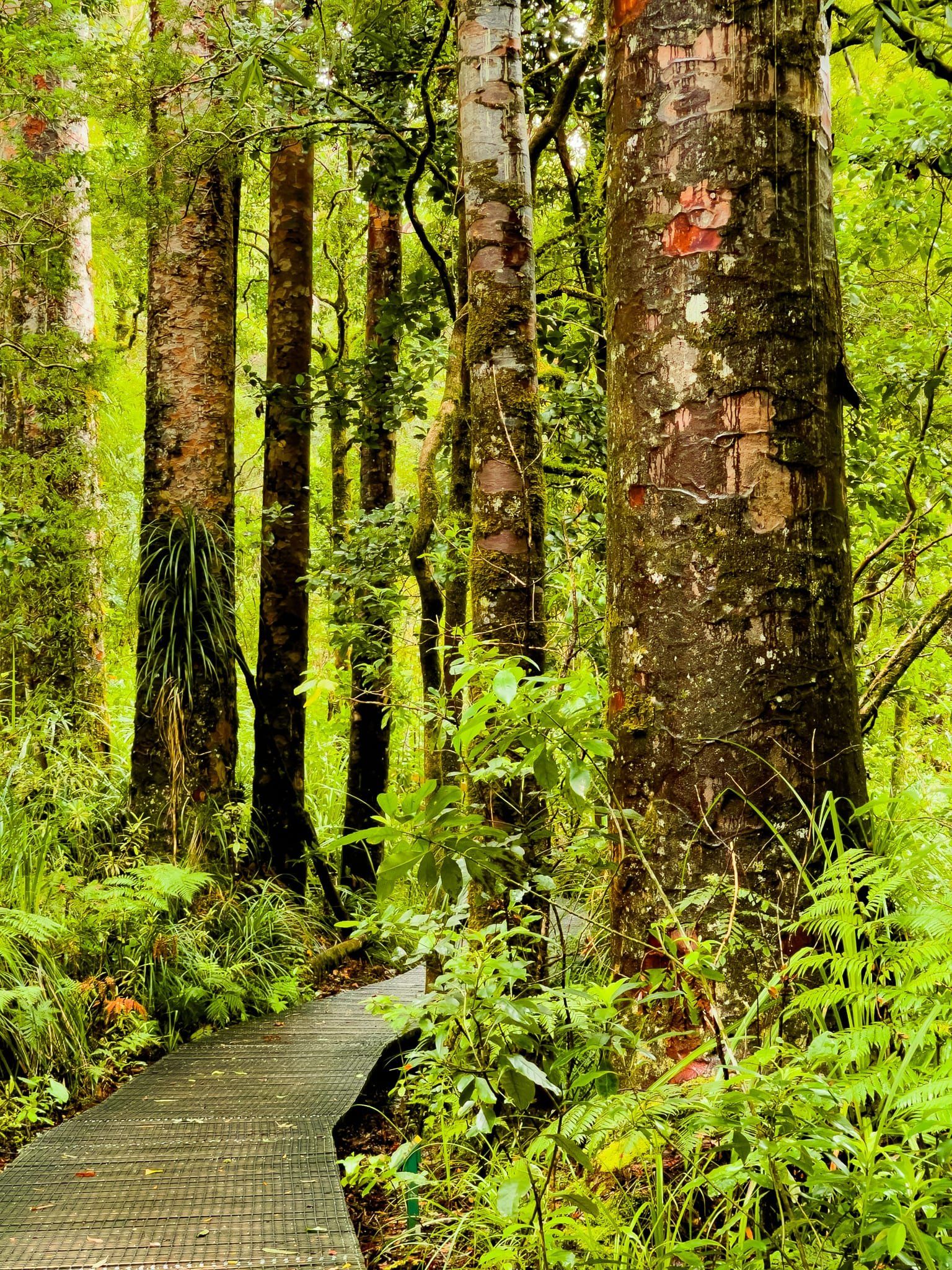State Highway 12 takes you directly through Waipoua Forest on Northland's Kauri Coast, which is thick with giant kauri. The road is windy and has limited stopping options, but even from the car, you get a real sense of the scale of the trees and the forest. There are evident and separate car parks for the Te Matua Ngahere and Tāne Mahuta tracks.
Tāne Mahuta is a five-minute walk and is always popular, with around 200,000 visitors annually. Te Matua Ngahere takes about 40 minutes but has the advantage of an extended walk amongst many giant trees, resulting in a superb experience. You can also access the campground on Waipoua River Road, off State Highway 12.
Waipoua Forest has had an often difficult history, with several inadequate partial attempts to protect it up to the 1970s. The forest was bought from Tiopira Kinaka (Te Roroa) and Parore Te Awha (Te Kuihi) in 1876. At the time, it covered about 80 square km, and the intention was to ultimately clear it, along with all the other kauri forests in the upper North Island. By 1907, Waipoua Forest and nearby Warawara Forest were the only substantial kauri forests left. In 1913, a Royal Commission found that an area of Waipoua Forest and the whole of Warawara Forest should be protected.
This proved inadequate, and in 1926, the road (now State Highway 12) was put through Waipoua Forest to connect to the Hokianga. The State Forest Service also continued cutting kauri, and in 1947, various conservation organisations presented a thirteen-volume petition in a wheelbarrow to parliament. More petitions followed, and in 1952, 80 square km was made a forest sanctuary.
However, the government began cutting kauri again in the forests in the 1960s until public protests led to the end of cutting in 1972. In those few years, a fifth of the surviving forest was lost. Since then, additional land has been allocated to the protected forest.
More recently, the forest has been threatened by kauri dieback disease, which has closed several tracks. Te Rorora Iwi is responsible for the protection programme, which you can read about here.
